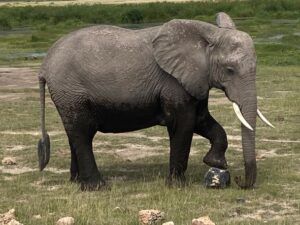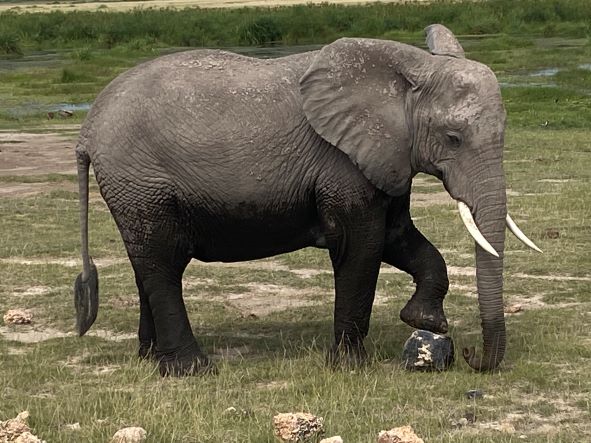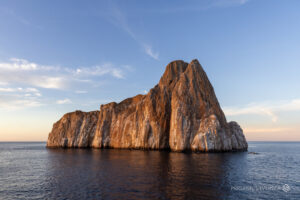Amboseli, established in 1974 and 4,500 feet above sea level, lives in the shadow of Mt Kilimanjaro and has been on my radar for years. Amboseli is famous because of its concentration of elephants – AND is home to the Super Tusker elephant; of which there are less than 20 in the world.
What is a ‘Super Tusker’ you ask? An elephant that has tusks EACH weighing over 100 lbs. He is a BIG boy – and my first morning waking up this guy Craig lumbered up to the watering hole at the property, Tawi Lodge. Pretty amazing start to the day. Super Tuskers have long been targets of poaching because of their tusk size; often touching the ground
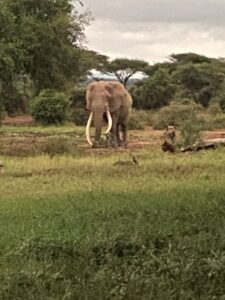

Amboseli, (151 square miles in size) means ‘salty dust’, is the 2nd most popular national park in Kenya (after Maasai Mara). Located 160 miles southeast of Nairobi on the border with Tanzania – only an hour flight from Nairobi
There are five distinct areas in the park:
- Dried up bed of Lake Amboseli
- Sulfur springs wetlands
- Savannah vegetation cover
- Open Plains
- Woodlands

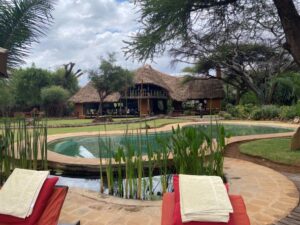
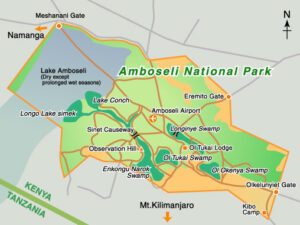

Home to some of Kenya’s biggest elephant herds and with exquisite views of Mt Kilimanjaro there are over 80 different species of animals found here including include the African elephant, African buffalo, impala, lion, zebra, wildebeest, cheetah, giraffe, hippopotamus, Thomson’s gazelles, spotted hyena & Cape buffalo.
No question the star of the show was the elephants….
Elephants are the largest existing land animal and there are three living species recognized; the African Bush elephant, the African Forest Elephant, and the Asian elephant. A matriarchal society they have one of the world’s most advanced and elaborate fascinating social structure. Elephants can live up to 70 years and have a 22 month gestation period and are herbivores. They eat grass, trees and low woody plants.
A group of elephants is a herd. A group of elephants MOVING is called a parade
There are over 400 (!) species of birds in Amboseli including Dickinson’s kestrel, Greater flamingo, Rufous chatterer, Steel blue whydah and the Tavata golden weaver – who make the most amazing nests.

